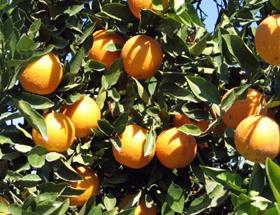
After three years of strong volume, the California citrus industry no doubt expected a relatively light crop for the 2013/14 season. That would make sense, as production over the last three seasons averaged more than 88m carton equivalents (18.1kg) – the heaviest for successive seasons since the California Department of Food and Agriculture (CDFA) began conducting pre-season navel orange surveys in the late 1980s.
Fruit trees – including citrus – often experience a ‘down’ year, following an extended run of heavy production, because they need to rest systemically. Add in the fact that California has suffered through two years of drought, and the odds were that it would be a ‘light’ year for navel oranges.
The CDFA’s California Agricultural Statistics Service (CASS) raised a few eyebrows when it issued its forecast for the 2013/14 season calling for a 85m carton crop in the San Joaquin Valley, where 97 per cent of the state’s navels are grown – down just two per cent from last year’s 87m carton crop.
“You could see it coming over the summer,” says Tom Wollenman of LoBue Brothers in Lindsay, California. “First of all, (the industry) had an early spring bloom followed by warm weather, and there were some heat spikes (in the late spring and early summer) that naturally thinned the crop. But the weather we had this summer actually never got too warm to shut down the trees (metabolically) and instead promoted good cell growth, so the fruit just kept on growing. By 1 August we were seeing some of the largest sizes for navels in several years.”
Wollenman expects the 2013/14 navel crop to peak on size 72s, followed by 56s and then 88s with relatively few count 113s. “It’s an excellent size curve for export markets,” he notes.
Along with large sizes, California navels are also maturing early this year.
“With this early maturity, you could even see some Christmas and New Year promotions on navels in Australia and New Zealand this year,” says Izak DuToit of Booth Ranches. “That rarely happens.”



